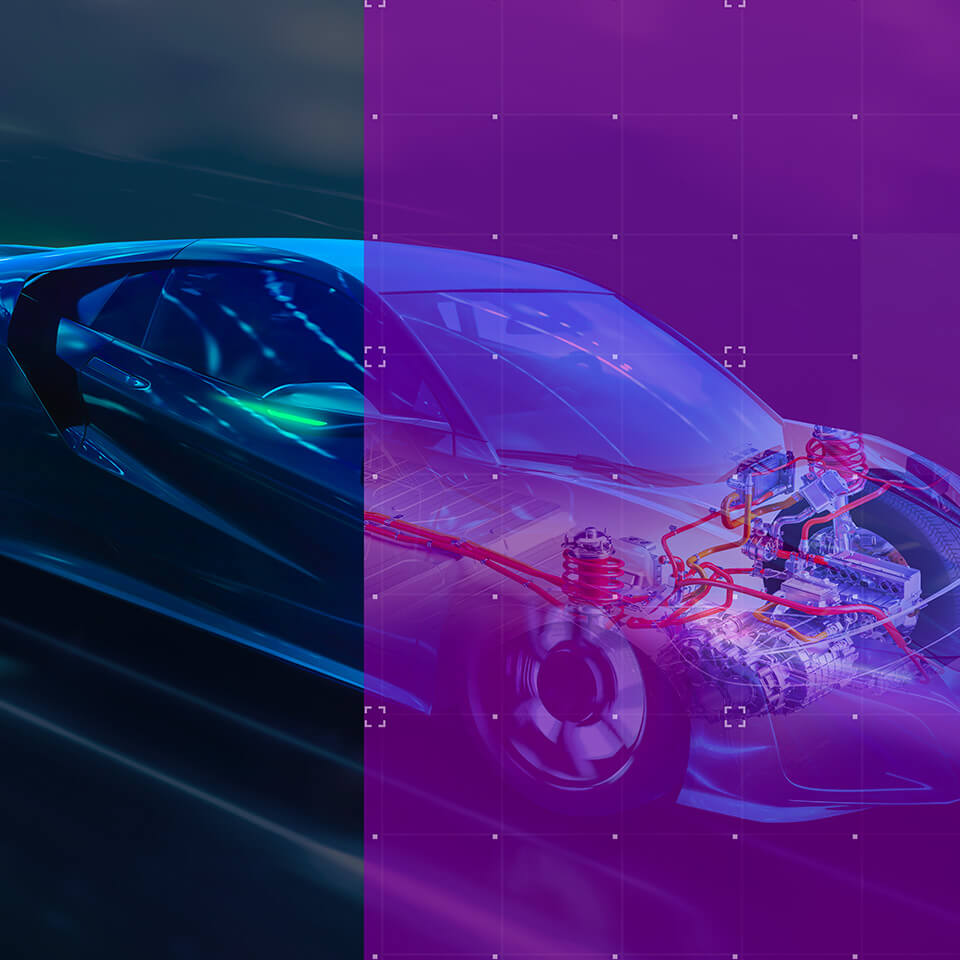In brief
- Software-defined vehicles (SDVs) are transforming automotive, with software taking precedence over hardware in defining vehicle features, capabilities and safety functions
- SDVs allow for continuous software updates and iterative improvements to enhance vehicle performance and safety
- The rise of SDVs has necessitated robust cybersecurity measures to ensure the security of vehicle data and protect against unauthorized access
The face of automotive technology has been changing faster than one can say, "Hey Siri*, find me the nearest gas station!" (*other virtual assistants also available). We've seen the transformation from mechanical control to electronic control systems, and now we're witnessing the dawn of an era where vehicles are defined not by nuts and bolts but by bits and bytes. Welcome to the exciting world of software-defined vehicles (SDVs).
SDVs represent the revolutionary shift in which the software in a vehicle takes precedence over its hardware, defining its features, capabilities and safety functions. With such a transformative approach, the concept of functional safety has undergone a radical overhaul where cybersecurity is a mandatory pre-requisite for ensuring a safe customer experience.
Functional safety
Before we dive in, let's clear the air about functional safety (FuSa). No, it's not about having seatbelts that also double as bottle openers. FuSa is a part of the overall safety of a system that depends on the system or equipment operating correctly in response to its inputs. Put simply, it's about the assurance that vehicles operate safely under a range of conditions, even during unforeseen events or malfunctions. The FuSa process is defined in ISO 26262 — it guides the design, implementation and testing of safety-related systems in road vehicles. Safety culture throughout the whole product development cycle — including specification, development, testing and validation, production, and all the surrounding management processes — is core to the achievement of functional safety.

Now, let's delve into why SDVs are forcing new approaches to functional safety.
The democratization of automotive innovation
In the traditional automotive world, innovation was a high-stakes game where only the heavyweights could compete. With the SDV approach, innovation will soon become as simple as rolling out an application update. No more waiting for new hardware to enhance vehicle performance or safety; developers will be able to introduce advanced features, functions and fixes through software updates. In the same vein, safety features, previously hardwired and static, can — and should — be iteratively improved upon, keeping pace with the rapidly advancing tech sphere.
Proactive safety: The new paradigm
Traditional functional safety in vehicles was more reactive in nature, leaning on the side of ‘an ounce of prevention is worth a pound of cure.’ It relied heavily on humans for decision-making in critical situations. However, the advent of SDVs has shifted the focus toward proactive safety measures. With sensors, LiDAR and radar systems, SDVs are equipped to predict potential hazards and respond accordingly, often faster than human reaction times. It's like having Spiderman's 'Spidey sense' but for your car. For each of these sub-systems, proactive methods like FMEA, FTA and DFA are used to identify failures and their impact on the safety goals — changes to process and design are then made based on the analysis. However, the full SDV also has to ensure SOTIF (Safety of the Intended Functionality) according to the ISO 21448.
Security: The new age safety harness
As software starts defining more and more aspects of a vehicle, security becomes a critical aspect of functional safety. After all, we wouldn't want some tech-savvy miscreant taking control of our vehicles, would we? This is why SDVs are being designed with robust cybersecurity measures that are as essential as the anti-lock braking system. They ensure that our rides are safe, not only on the road, but also in the vast, interconnected web of the digital world.
The transformation of functional safety through SDVs is a testament to the revolution that software and technology are bringing to the automotive industry. With the power to innovate being unlocked and given to the software, we're now riding into a future that's more secure and exhilarating than ever. But let's not forget, while our vehicles are becoming smarter, the responsibility of safety is not solely on their silicon shoulders.
End-to-end approach to functional safety
The end-to-end (E2E) approach to FuSa has been significantly impacted by the advent of SDVs — SDVs are altering the traditional approach to concept development, design, system test and validation (ST&V) and production. In the past, FuSa primarily focused on hardware-centric safety measures, such as mechanical components and physical redundancies. However, the emergence of SDVs has introduced a new layer of complexity, as critical safety functions now heavily rely on software algorithms and electronic control systems. Consequently, the E2E approach to FuSa now necessitates a comprehensive understanding of software architecture, robust coding practices and effective software verification and validation techniques.
During the concept phase, the E2E approach involves assessing safety implications specific to software integration and interoperability. The design phase emphasizes the development of safe software architectures, fault-tolerant mechanisms and effective error handling. Software testing and validation activities now encompass rigorous software testing, including static analysis, dynamic testing and simulation-based assessments. Additionally, the production phase demands stringent software configuration management, secure over-the-air updates, and continuous monitoring to address potential vulnerabilities. By incorporating FuSa at every stage, organizations can better address the unique safety challenges associated with modern automotive systems, ensuring that software-related risks are adequately mitigated and overall vehicle safety is enhanced.
The human element
No amount of technological advancement can entirely negate the human aspect. As responsible drivers we have a significant role in ensuring functional safety. This involves keeping abreast with the latest software updates, understanding how our vehicles respond to various situations, and most importantly, driving responsibly. So, the next time your car alerts you about an upcoming software update, treat it with more urgency than your smartphone OS updates. And remember, while your software-defined vehicle is equipped to handle a lot, it can't replace good, old-fashioned, attentive driving.
Looking ahead
The advent of SDVs has brought about a transformative shift in the approach to functional safety. SDVs have democratized automotive innovation, allowing for continuous software updates and iterative improvements to enhance vehicle performance and safety. Proactive safety measures — enabled by advanced sensors and systems — have replaced reactive approaches, enabling SDVs to predict and respond to potential hazards more swiftly than human reaction times. Furthermore, the rise of SDVs has necessitated robust cybersecurity measures to ensure the security of vehicle data and protect against unauthorized access.
The E2E approach to functional safety has evolved to encompass a comprehensive understanding of software architecture, coding practices and verification techniques, addressing the unique challenges posed by software-defined systems. While technology plays a pivotal role in advancing functional safety, responsible drivers remain essential in ensuring the safe operation of SDVs by staying informed, engaged and attentive behind the wheel. As the automotive industry continues to embrace the potential of SDVs, the future holds both exciting opportunities and an ongoing commitment to prioritizing functional safety.
So, the next time you hop into your car, remember — functional safety in SDVs is an ongoing, ever-evolving journey. It's a transformative process that is shifting the conventional paradigm, turning it into an anticipatory and preventive mechanism that's intertwined with the software's very code. The world of software-defined vehicles is taking us on a thrilling ride where the safety measures are not just embedded, but embedded intelligently. Buckle up for this innovative journey, where safety is not just an add-on but an integral part of the driving experience.









